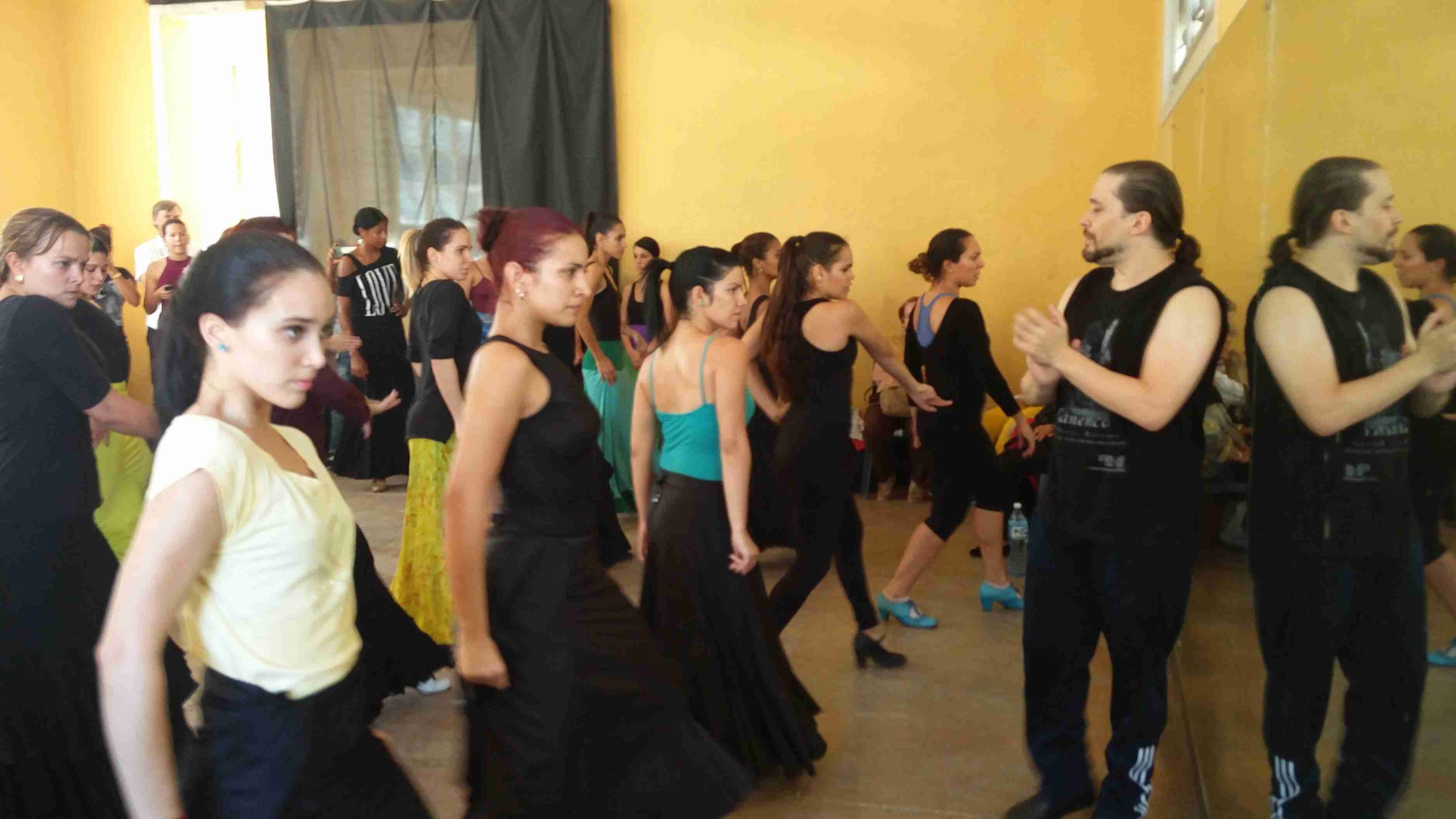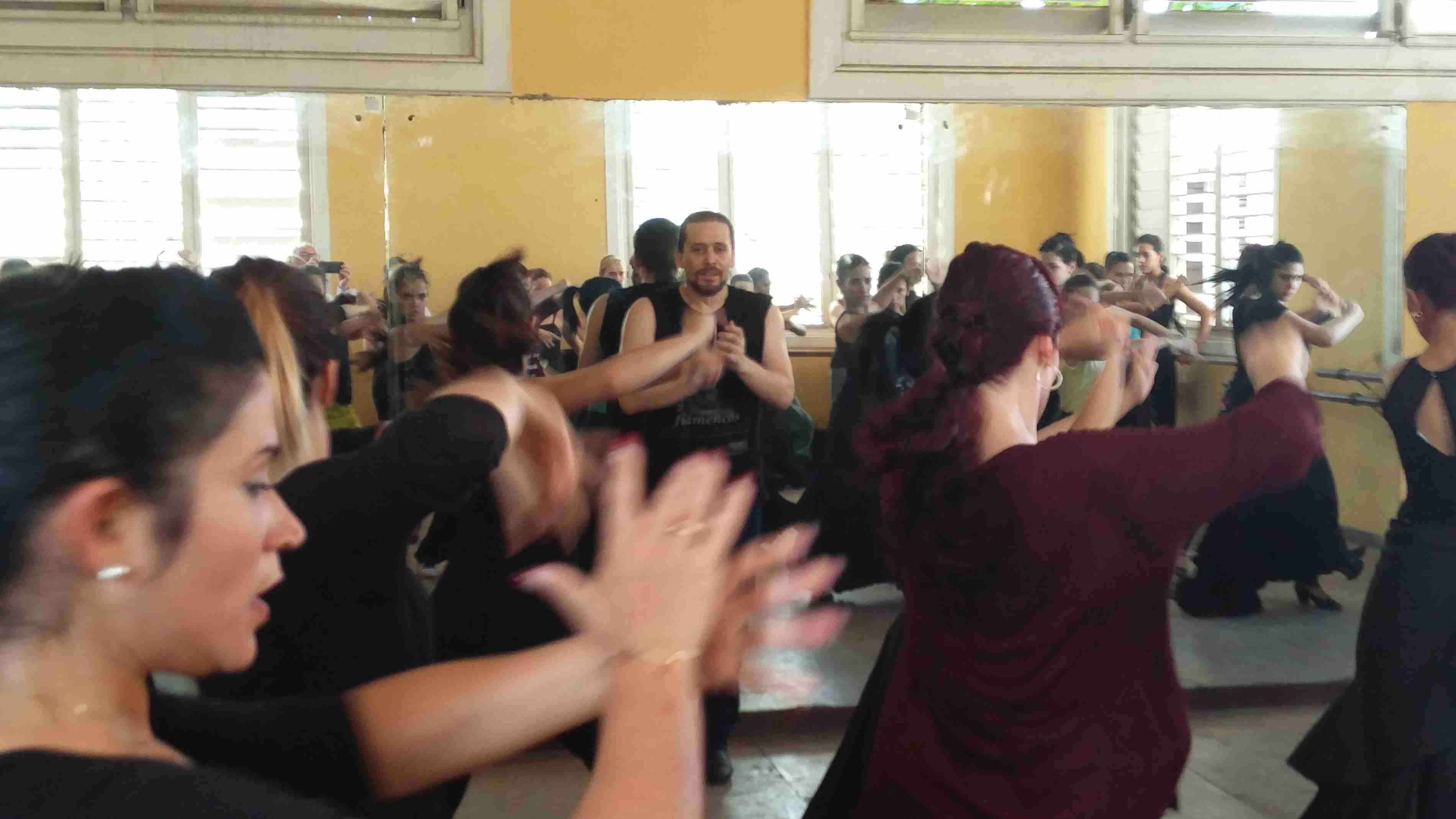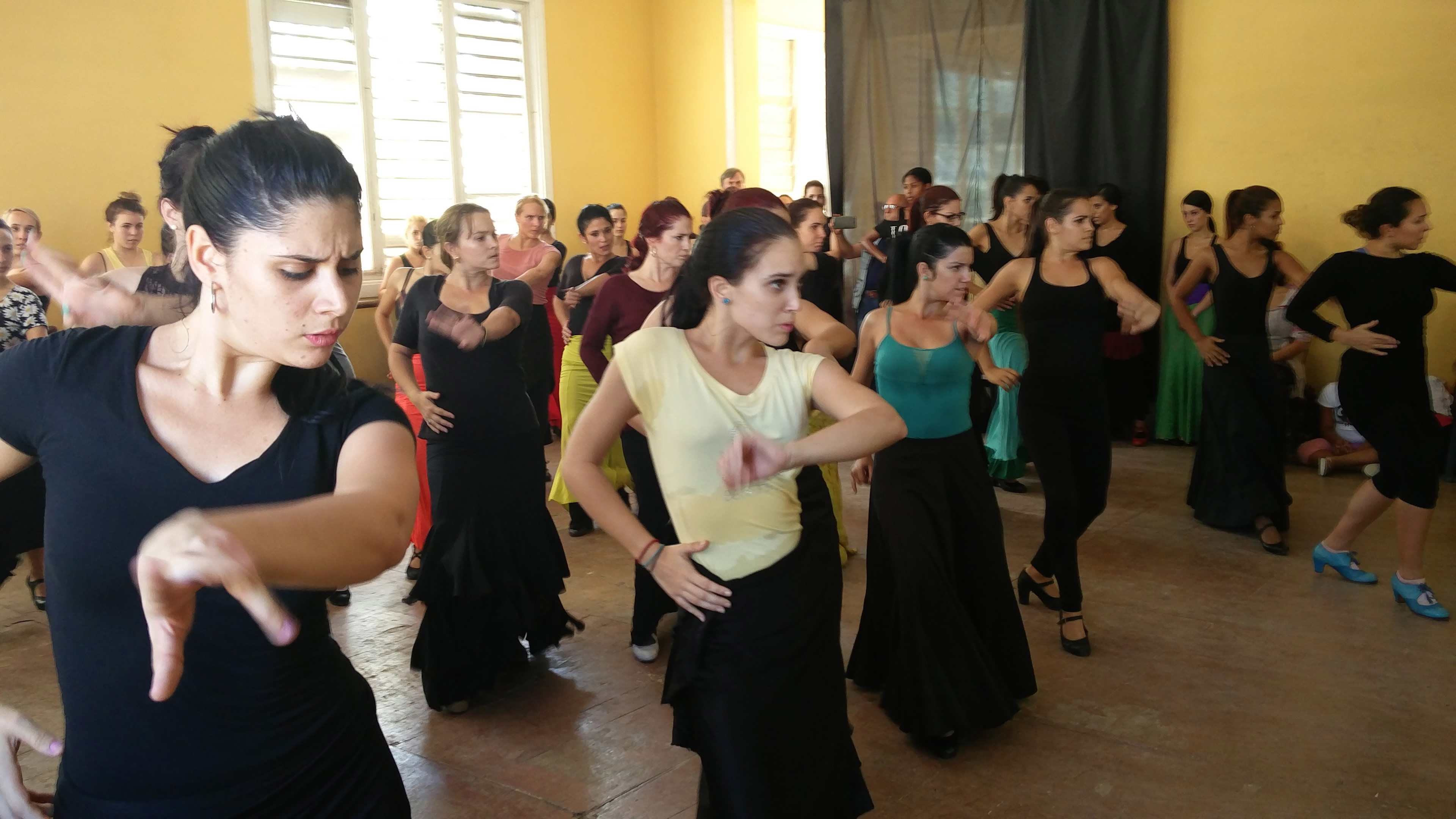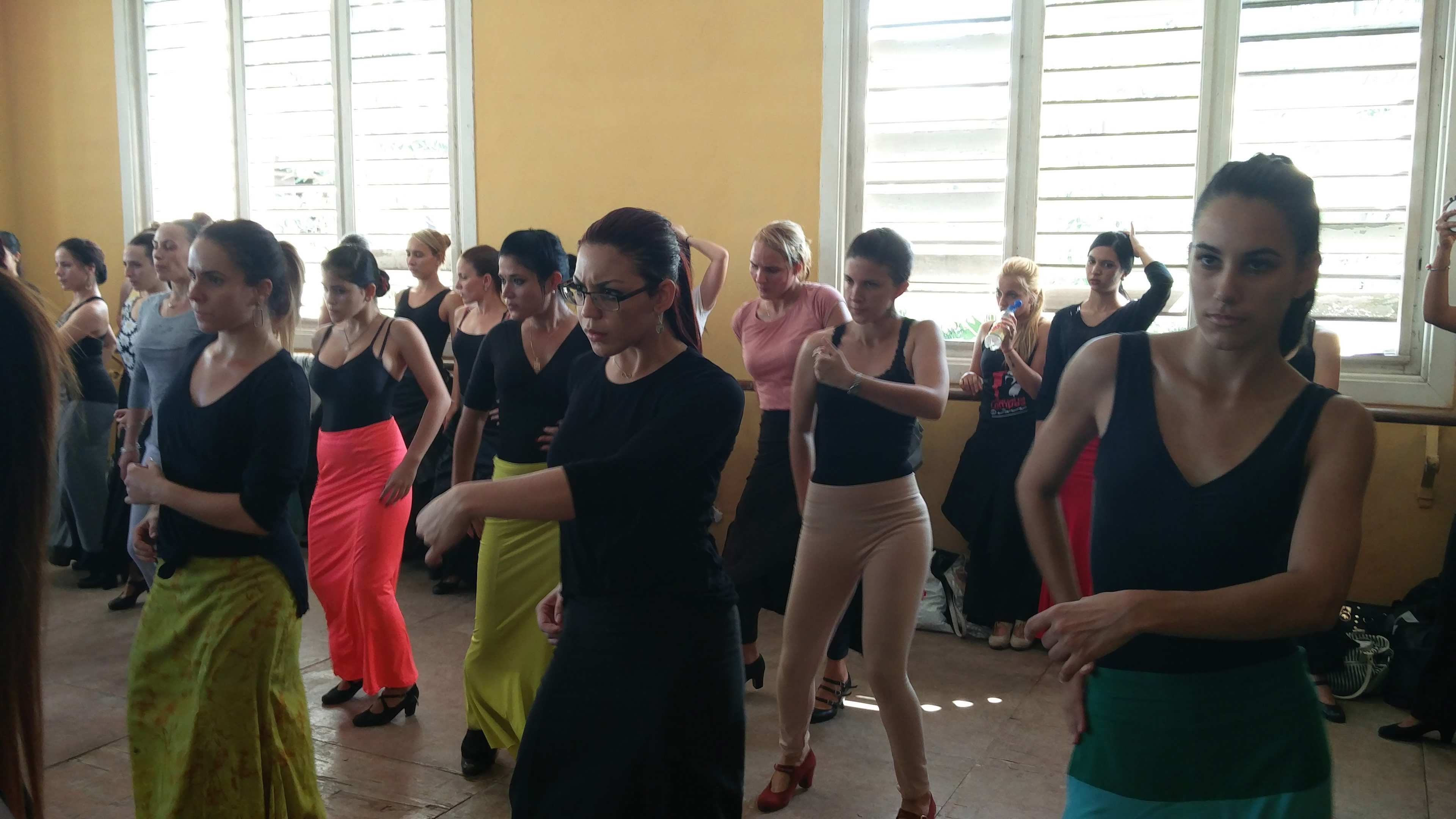
Culture
12:02, 25-Nov-2017
Reporter's Notebook: Flamenco in Cuba
By Michael Voss

One of the great pleasures of living and working in Cuba is the wide range of cultural activities and shows. Many Cubans love to dance everything from salsa to classical ballet and modern dance.
There are live salsa bands performing at dance clubs every night of the week.
Tonight, I am going to a special performance of the Cuban National Ballet put on as a tribute marking the first anniversary of the death of Fidel Castro.
Flamenco is also a popular art form given Cuba’s Spanish roots and there are bars and clubs in Old Havana with nightly flamenco shows.

Flamenco class /CGTN Photo
Flamenco class /CGTN Photo
So, when I heard that two top flamenco teachers were coming to Cuba for what was billed as the "1st Intercontinental Encounter of Flamenco in Havana," I was curious to find out more.
There was clearly a lot of interest from the Cuban side. When I arrived at the cultural center hosting the event, there was already an expectant crowd of mainly teenage girls lining up waiting to get in.
They had come to attend workshops given by two renowned Spanish flamenco teachers and dancers, Alfonso Losa and María Juncal. Both are based at one of the most famous Flamenco schools in the world, Amor de Dios in Madrid.
My Cuban cameraman, Reinaldo Gil, and I squeezed ourselves into a corner of the small studio, packed with several dozen Cuban dancers.
The class was all about back to basics.
There are several flamenco dance companies here in Cuba but many of them add a bit of Latin spice and rhythm to their performances.
The Spanish teachers had come to make sure they don’t forget their traditional roots.
“We have come here to show real flamenco and give shape to their understanding so that flamenco can further develop here. That’s our objective,” Losa told me.

Flamenco class /CGTN Photo
Flamenco class /CGTN Photo
Even in the advanced class, you could see the intense concentration on their faces, as Losa put them through their paces. He started with the simplest steps, body position and arm movements and then built up from there.
“No one has come here for years and now we are very happy to get taught in person rather than by video,” Cuban flamenco dancer Angela Badell said afterwards.
There was a downside to spending an hour or two filming these flamenco workshops – the noise. The sound of the percussive footwork of a few dozen dancers stamping their feet in unison on the wooden floor was both deafening and hypnotic.
At one point, Gil the cameraman had to take a break to clear his head.
He couldn’t use a tripod to film either, the vibrations from the floor meant the camera had to be hand held the whole time.
One thing that surprised me was that there was only one male dancer in the experienced group, all the rest were women.
Ana Rosa Menses is director and lead dancer in the Havana based Ecos Flamenco Company and told me that she has been unable to find any male dancers to join her company.
“It’s a shame because flamenco can be very masculine; the man has a strong role to play.”

Flamenco class /CGTN Photo
Flamenco class /CGTN Photo
Once the top class had finished, I stayed to watch a second workshop get underway, this time with a mix of beginners and intermediate dancers, teenagers and children. Here there were a few more boys and young men.
Even at this level, their Spanish teacher, María Juncal, was impressed.
“You can find a lot of talent here, they know about the dance, they know how hard is dance, and like classical ballet they know they can’t be in a studio without full concentration, so it’s easy to teach them.”
The future of flamenco in Cuba looks set to live on.
I suspect, though, that the next time I go to a flamenco show in Havana the dance techniques may be a little more rigorous thanks to these free workshops, but I doubt that Cubans are about to stop adding a bit of their own body language and rhythms as well.

SITEMAP
Copyright © 2018 CGTN. Beijing ICP prepared NO.16065310-3
Copyright © 2018 CGTN. Beijing ICP prepared NO.16065310-3